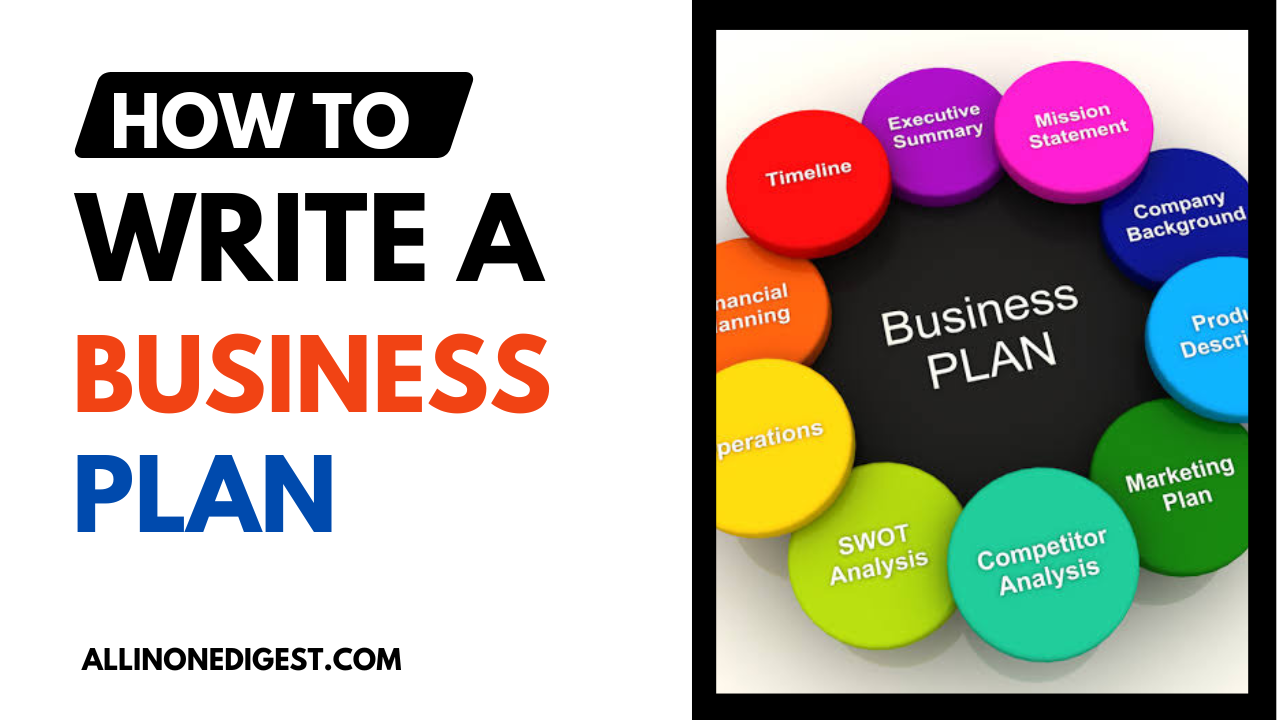Your cart is currently empty!
How to Write a Business Plan: A Step-by-Step Guide

Writing a business plan is a crucial step for any entrepreneur. It serves as a roadmap for your business and helps you clarify your business idea, plan your strategy, and communicate your vision to potential investors, partners, and lenders. Here’s a detailed guide on how to write a business plan:
1. Executive Summary
- Purpose: This is a brief, compelling overview of your business plan. It should grab attention and provide a high-level summary of your entire plan.
- Key Components:
- Business Name and Location: Include the name of your business and where it’s located.
- Mission Statement: A concise statement about the purpose of your business.
- Products/Services: A short description of what you’re offering.
- Business Objectives: Your main goals for the business (e.g., revenue targets, market position).
- Ownership Structure: Briefly explain the legal structure (e.g., LLC, sole proprietorship, partnership).
- Key Success Factors: What will make your business succeed?
2. Company Description
- Purpose: Provide a detailed description of your business, its mission, and the market it serves.
- Key Components:
- Business Overview: Describe your business, what it does, and the problems it solves.
- Industry Background: Include insights into the industry or market in which you operate, including trends and opportunities.
- Target Market: Define your ideal customer. Who are they? Where are they located? What needs do they have?
- Business Goals: Short-term and long-term objectives.
- Competitive Advantage: What differentiates your business from competitors?
3. Market Research
- Purpose: To show you understand the market and customer demand.
- Key Components:
- Target Market: Dive deeper into who your customers are, their demographics, behavior, and needs.
- Market Size and Potential: Provide data on the market size and growth potential.
- Competitive Analysis: Identify your direct and indirect competitors. What are their strengths and weaknesses? What will make you stand out?
- Market Trends: Identify relevant trends, consumer behaviors, and other market conditions that could impact your business.
4. Organization and Management
- Purpose: Explain your business’s organizational structure and introduce your management team.
- Key Components:
- Organizational Structure: Describe your company’s structure, whether it’s a sole proprietorship, LLC, or corporation.
- Management Team: Highlight key members of your team, their roles, qualifications, and experience.
- Advisory Board (if applicable): If you have any advisors, explain their roles and how they will help guide the business.
5. Products or Services
- Purpose: Provide a detailed description of your products or services and how they fulfill a market need.
- Key Components:
- Product/Service Description: Describe what you’re selling or the services you’re offering, including any key features and benefits.
- Unique Selling Proposition (USP): Explain what makes your product/service different from competitors.
- Development Stage: If applicable, explain any stages of product development or how your products/services will evolve.
- Pricing Strategy: Detail how you plan to price your products or services and the rationale behind it.
- Intellectual Property (if applicable): Mention any patents, trademarks, copyrights, or proprietary technologies.
6. Marketing and Sales Strategy
- Purpose: Outline how you will attract and retain customers.
- Key Components:
- Marketing Plan: Define how you will market your business to your target audience (e.g., social media, email marketing, content marketing, SEO).
- Sales Strategy: How will you convert leads into paying customers? This could include sales processes, direct selling, online sales, etc.
- Customer Retention: Explain your strategies for keeping customers loyal, such as follow-up communications, loyalty programs, or excellent customer service.
7. Funding Request (if applicable)
- Purpose: If you’re seeking funding, this section is where you specify how much capital you need and how you will use it.
- Key Components:
- Amount Needed: State how much funding you need.
- Use of Funds: Describe how you will use the funding (e.g., for equipment, marketing, hiring, etc.).
- Future Funding: If applicable, mention how you expect to raise additional funds in the future.
- Repayment Plan: If you’re seeking a loan, include a repayment plan.
8. Financial Projections
- Purpose: Provide an overview of your business’s financial outlook to demonstrate its viability.
- Key Components:
- Income Statement: Project your revenue, costs, and profits over the next 3-5 years.
- Cash Flow Statement: Show how money will flow in and out of your business.
- Balance Sheet: List your assets, liabilities, and equity.
- Break-even Analysis: Determine when your business will break even—when revenue equals costs.
- Financial Assumptions: List the assumptions you’ve made for your projections (e.g., sales growth, market conditions).
9. Appendices
- Purpose: Provide additional supporting materials.
- Key Components:
- Resumes of Key Team Members: Include the resumes of your management team.
- Product Photos or Mockups: If applicable, show photos or renderings of your product.
- Market Research Data: Include relevant surveys, studies, or reports that support your research.
- Legal Documents: Add your business licenses, intellectual property filings, contracts, or partnership agreements.
- References/Testimonials: If you have any, include quotes or letters of support from customers or industry experts.
Tips for Writing a Business Plan:
- Be Clear and Concise: Avoid jargon. Your plan should be easy to read and understand.
- Use Real Data: Ground your market analysis, financial projections, and other parts of your plan in data and real-world assumptions.
- Tailor It to Your Audience: If you’re seeking investors, highlight your financial projections and scalability. If it’s for internal use, focus more on the operational side.
- Revise and Update: Your business plan is a living document. Regularly review and revise it as your business grows or pivots.
By following these steps, you’ll have a comprehensive business plan that provides direction for your business and helps attract investors or secure funding.